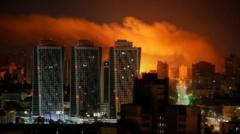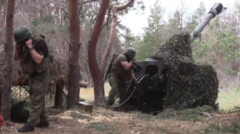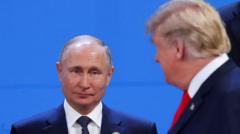The celebrated yet polarizing artist passed away, leaving behind a collection of controversial pieces that stirred debate over national identity and artistic expression.
Zurab Tsereteli: Controversial Sculptor Leaves Complex Legacy at 91

Zurab Tsereteli: Controversial Sculptor Leaves Complex Legacy at 91
Renowned for grand monuments, Tsereteli's works sparked both admiration and criticism, reflecting geopolitical tensions.
Zurab K. Tsereteli, the Georgian-Russian artist known for his grandiose monuments and controversial legacy, died on Tuesday at his residence near Moscow at the age of 91. His passing was confirmed by his assistant, Sergei Shagulashvili, and drew condolences from Russian President Vladimir V. Putin, who hailed Tsereteli as “an outstanding representative of multinational Russian culture.”
Renowned for creating oversized bronze statues that frequently received mixed reactions, Tsereteli famously unveiled a statue of Putin in 2004, portraying the Russian leader in a judo uniform. However, the piece was almost universally panned, remaining unsold at Tsereteli's gallery. His vibrant artistic style came to symbolize the essence of post-Soviet aesthetics and often aligned him closely with Kremlin authorities.
Despite his controversial standing in Russia, Tsereteli also sought to connect with his Georgian roots, contributing to the post-Soviet cultural narrative of his homeland. Notably, he was responsible for the Freedom Monument in Tbilisi, which replaced a monument of Lenin following the Soviet Union's dissolution, showcasing a move toward national pride.
In Georgia, however, Tsereteli faced backlash from locals who viewed his continued work within Russia as a betrayal. Nevertheless, his profound influence on both Russian and Georgian art scenes remains undeniable, with his works resonating against the backdrop of shifting geopolitical dynamics.
As the art world reflects on Tsereteli's achievements and missteps, his legacy as a complex figure whose work sparked both admiration and criticism will continue to resonate in discussions of national identity and artistry in the region.























